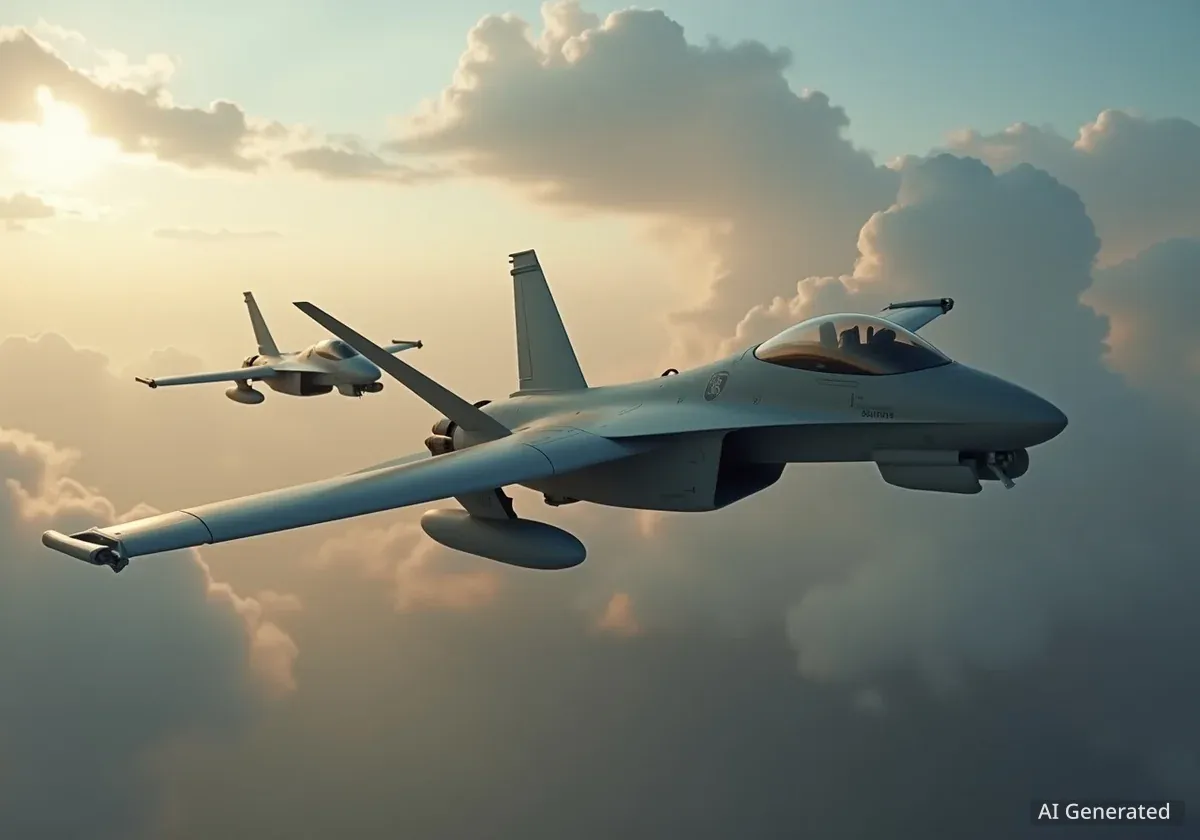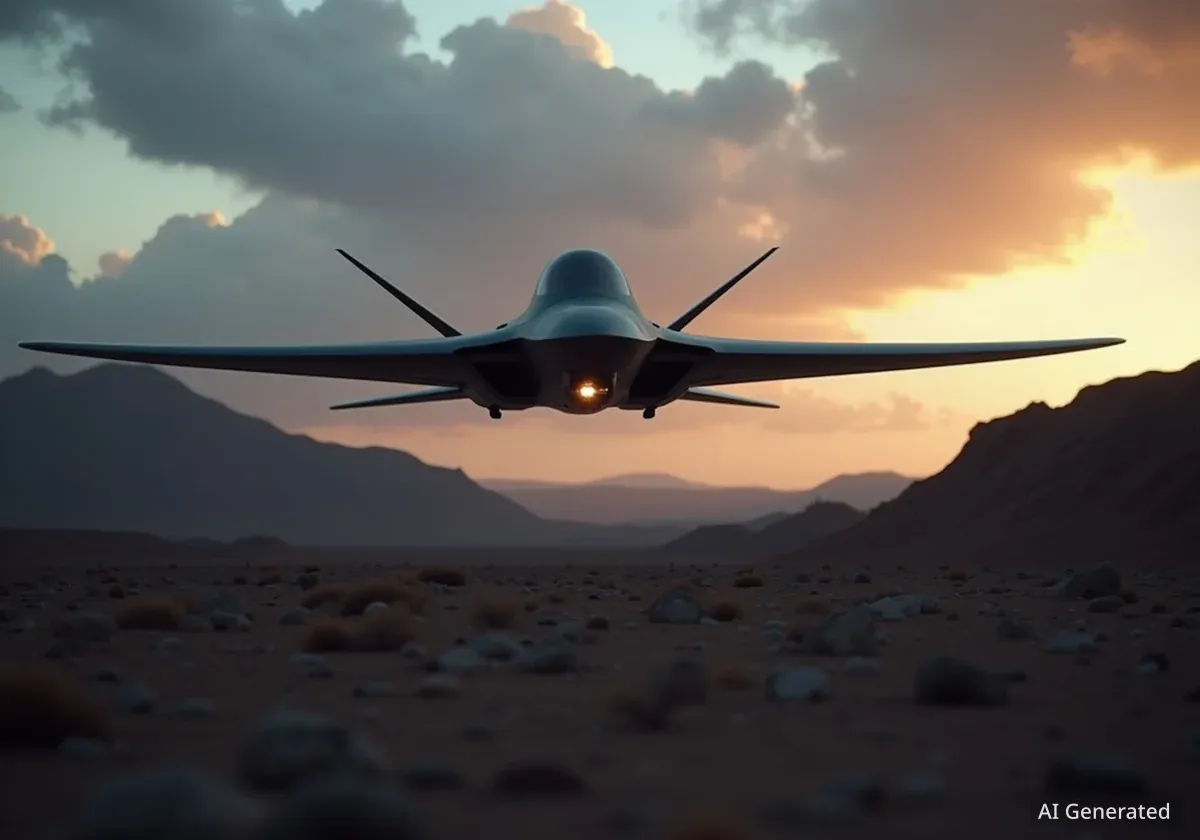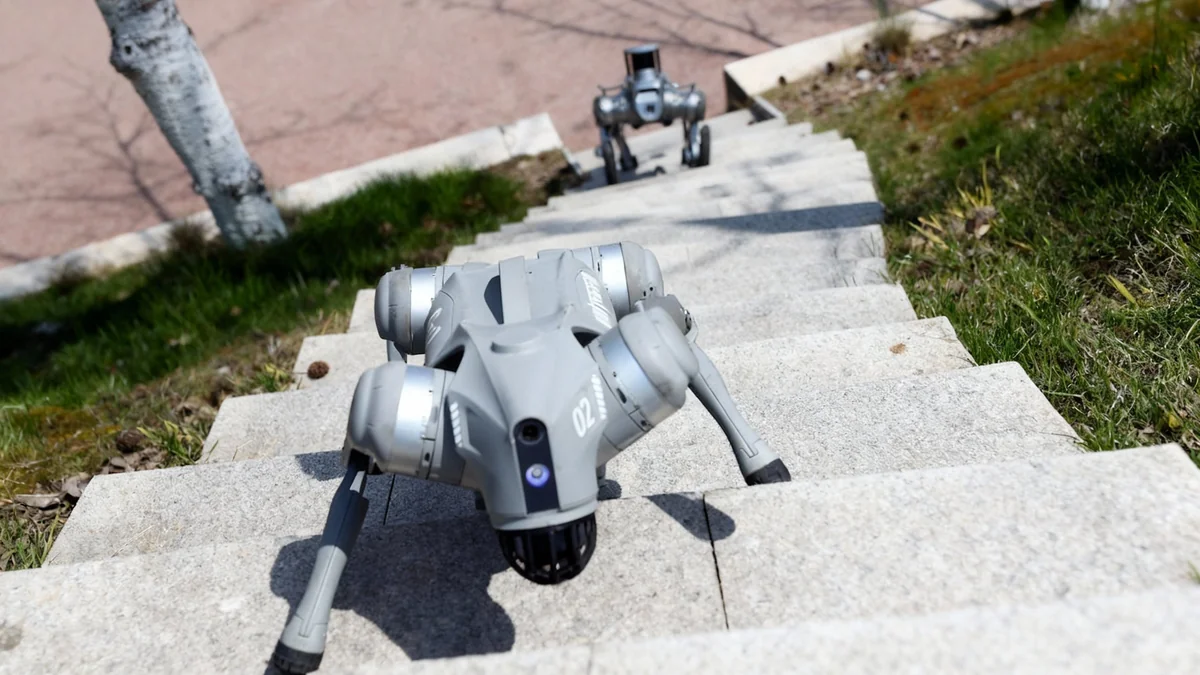The United States Air Force is actively testing artificially intelligent drones at Eglin Air Force Base in Florida, developing a new generation of autonomous aircraft designed to fly alongside human pilots. This initiative, centered on platforms like the XQ-58 drone, aims to address strategic challenges posed by potential adversaries and reshape the future of air combat.
Key Takeaways
- The U.S. Air Force is developing AI-piloted drones, including the XQ-58, to supplement its manned fighter fleet.
- Testing is underway at Eglin Air Force Base, with F-16s also being modified for AI control with a human safety pilot.
- The program aims to deploy 150 AI aircraft by the end of the decade, with a long-term goal of up to 1,000 units.
- A primary motivation is to counter the growing capabilities of the Chinese air force and achieve numerical superiority in potential conflicts.
- A debate continues over the autonomy of AI in combat, with current policy requiring a human to make all life-or-death decisions.
A New Era of Aerial Warfare
At the forefront of this technological shift is Major Trent McMullen, a fighter pilot involved in the testing program. He has flown alongside the XQ-58, an uncrewed drone operated by an advanced AI system. McMullen describes the experience of flying with an AI wingman as different from working with a human counterpart.
"As humans, we fly very smooth, but it can roll and fly a little bit snappier than maybe a human pilot would," McMullen noted, explaining that the AI's maneuvers can be more abrupt since there is no human on board to consider.
The XQ-58 Platform
The XQ-58 is a versatile drone that launches like a rocket. In a significant milestone, a full-scale model demonstrated a conventional runway takeoff for the first time in August. These AI drones are designed to be smaller and more affordable than traditional fighter jets, costing approximately $20 to $30 million each, which is about one-quarter the price of a manned aircraft.
The AI is being trained on fundamental combat tactics. According to McMullen, the system is learning "the basic blocking and tackling of air combat that we as human pilots also train on when we're first learning how to fly." The objective is for the AI to handle tasks like intercepting an enemy aircraft, freeing up human pilots for more complex strategic decisions.
Strategic Imperative and Future Fleet
The push toward autonomous combat aircraft is driven by a strategic necessity, according to military leaders. Retired Air Force Lt. Gen. Clint Hinote described the shift as a "revolution born of necessity," prompted by the modernization of China's air force, which has showcased its own advanced jet fighters and AI drones.
Hinote explained the strategic imbalance the U.S. faces in a potential conflict in the Pacific. "If we have to fight China, we're likely doing it in their front yard, and that means they can bring many, many more things to bear than we can," he said. War game simulations under these conditions have not been favorable for the U.S.
"The war games don't turn out very well. We lose."
AI-piloted drones are seen as the solution to even these odds. Their lower cost allows for greater numbers, and their uncrewed nature permits them to take on higher-risk missions without endangering pilots' lives. "You actually can take more risk," Hinote added.
Fleet Expansion Goals
- By the end of the decade: 150 AI-piloted aircraft
- Long-term target: Up to 1,000 AI-piloted aircraft
Training and Integration with Human Pilots
Beyond the XQ-58, the Air Force is also retrofitting manned F-16 fighter jets to be flown by AI. In these tests, a human pilot remains in the cockpit as a safety measure, ready to assume control instantly. "They'll be monitoring the system and ready to take over at a moment's notice," said McMullen. These AI-controlled F-16s are being pitted against human pilots in realistic combat simulations to refine the AI's capabilities.
An AI-piloted F-16 has already demonstrated its potential by holding its own in a limited dogfight against an experienced human pilot. The primary advantage of AI in this environment is its capacity to process vast amounts of data from sensors and battlefield networks far more quickly than a human can.
"A human out in a complex air combat environment, there's just no way to absorb all of it," McMullen explained. "Artificial intelligence might be able to take all of the data information, and then process that very quickly, and then make real-time decisions."
The Human in the Loop Debate
The introduction of armed, autonomous aircraft raises significant ethical questions, particularly regarding lethal decision-making. General Adrian Spain, head of Air Combat Command, was unequivocal that a human will always be responsible for authorizing the use of force.
When asked if AI would make life-or-death decisions, General Spain stated, "Absolutely not. The human who's controlling the AI will make the life-and-death decisions."
However, some experts believe this stance may be challenged over time. Lt. Gen. Hinote suggested that global militaries will face increasing pressure "to give the machines more leeway in making those life-or-death decisions." He confirmed that the U.S. military is experimenting with platforms that could be given the option to fire autonomously if policies were to change.
General Spain acknowledged the risks associated with fully autonomous systems. "The AI can be fooled, the AI can be overwhelmed. It can give you false outcomes. We've seen that AI can hallucinate," he said. "I don't think America is comfortable with that yet... We have to build that trust over time."
For pilots like Major McMullen, the choice is pragmatic. When asked about entering combat with a human or an AI wingman, he focused on mission effectiveness and safety. "When we're talking about the threats of tomorrow, if I can send an uncrewed asset into a high-risk environment, I'd rather do that than send a human pilot," he concluded.





